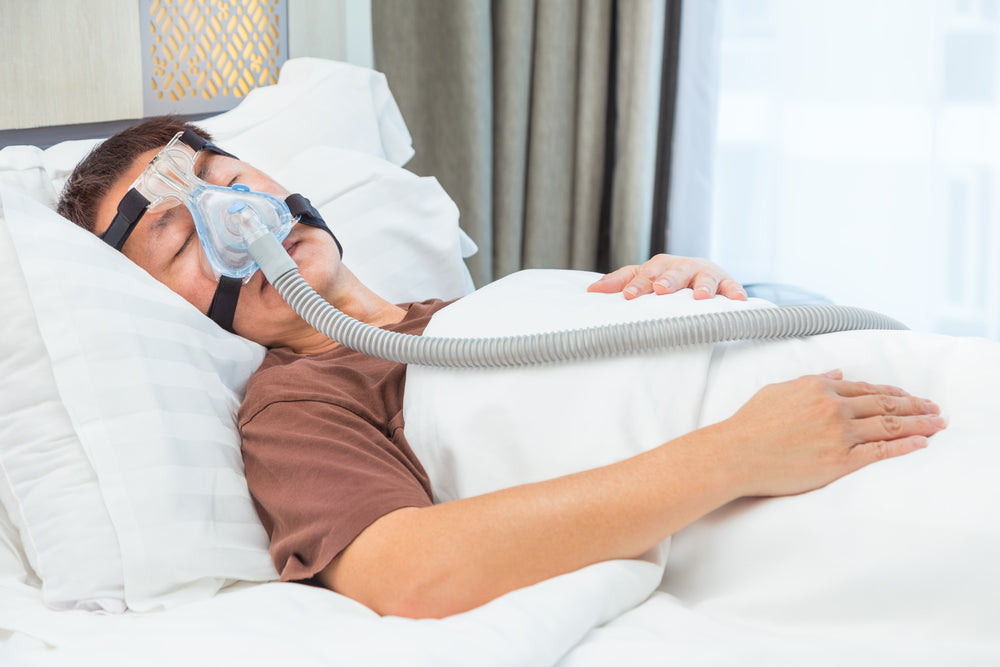It is completely normal to experience anxiety or nervousness when learning how to sleep with CPAP equipment. Everyday someone is learning how to adjust to sleep with a sleep apnea therapy device, so there is always a way to get the great sleep you need to live the life you want. Here are a few tips and tricks you can use to learn how to adapt your body and sleep routine to your new therapy on your terms.
Develop Good Sleep Hygiene
Getting treatment for your sleep apnea is crucial to maintaining quality health and wellness. Sleep is so important that sleep doctors are now going so far as to prescribe sleep as a medicine, and encouraging patients to develop good sleep hygiene, which includes the recommended eight hours of sleep per night.
What is sleep hygiene? It’s a set of repeated behaviors meant to encourage a good night’s sleep. Generally, try to follow these rules:
- Wake up at the same time everyday
- Do not nap for more than 15 minutes at a time
- Exercise early in the day, not before bed
- Don’t consume caffeine in the later afternoon or evening
- Don’t drink alcohol before bedtime to stave off “rebound insomnia”
- Develop a bedtime routine to signal to yourself that it’s time to get ready for sleep
- Don’t include TVs, phones or computers in this routine if at all possible
If you’re new to wearing a CPAP machine to sleep, following steps like these and cultivating good behaviors can help you more easily adjust to the CPAP and stay asleep longer as you’re adjusting to your new routine.
Start Using the Mask on Your Terms
Adjusting to CPAP therapy can be challenging, but make sure that you ease yourself into wearing the mask on your terms. Try wearing the mask for a few short periods during the day at first, particularly when you’re not tired, so you can find a comfortable fit. Then, wear the mask while watching TV or reading a book so you can get used to the feel of it on your face.
Your sleep specialist and equipment provider will have set up all the pressure settings to provide you with the best therapy possible, but you may need to make small changes to the pressure or humidifier settings to make it just right for you. Remember, that there are a couple different kinds of masks you can use and one may be more comfortable for you than another. Do you research to find out which mask suits your needs best.
Ensure Your Mask Fits Comfortably
As mentioned above, you’ll want to make sure that your mask fits your comfortably, but you may need to make subtle adjustments that will make it exactly right for you. Two things you’ll want to adjust perfectly are seal and comfort. Stand in front of a mirror while wearing your mask so you can make sure it’s centered on your face. Once you have the mask on in a comfortable place, you can attach the tubing to the CPAP machine and connect it to the mask.
Note: Your face contours will change once you lay down, so be sure to test it laying down as well to maintain a comfortable seal throughout the night. This ensures the most effective sleep apnea therapy possible.
Sleep When You Are Relaxed and Tired
Part of the problem with modern day sleeping is that we tend to use our beds for more than just sleep. We have our phones, computers, and televisions on which can keep us stimulated and unable to get tired or relaxed enough to fall asleep quickly. Especially when you are learning to adjust to your CPAP therapy, you’ll want to create ideal sleeping conditions so you can experience the quality sleep you get once you no longer suffer from untreated sleep apnea.
Try to avoid engaging with anything that emits blue light, like electronics, and try not to discuss emotional issues that can induce stress or adrenaline, which is counter-productive to sleep. Put your problems aside however you can, and focus on rest.
In order to create a relaxing environment, try doing something that puts you in a clear, calm state of mind. Take a long bath or shower. Listen to some soothing music or an audio book. Meditate or practice relaxation exercises, like yoga, before heading to bed. Whatever you choose, ensure that you create a comfortable, unstimulating sleeping environment to the best of your ability.
While you don’t need to have sleep apnea or a CPAP machine to observe these tips and tricks for good sleep, they are especially important if you are introducing any kind of medical device into your nightly sleep schedule. CPAP therapy is designed to help you sleep better, and these are just a few ways you can expedite the adjustment process so you can start sleeping better, sooner.

